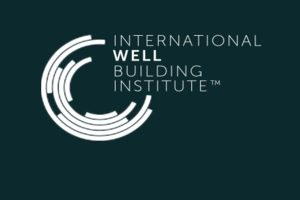What is WELL v2 Building Certification?
- < The Benefits of AIA Webinars for Building Product Manufacturers
- > How Free Webinars Help Sell Building Products
As a global benchmark for health, WELL is a building certification used by over 4,000 projects in 60 countries. WELL v2 is built on the foundation of the first version of the WELL Building Standard (WELL v1). In this blog, we’ll dive into the second version of WELL, the most rigorously test and vetted version of the standard to date.
About WELL
WELL is a premier building standard for interior spaces and communities that originally launched in 2014. It was developed by integrating scientific and medical research as well as literature on environmental health, behavioral factors, health outcomes, and demographic risk factors that affect health with leading practices in building design, construction, and management.
WELL is developed by the International WELL Building Institute (IWBI), which defines itself as the “leading global movement to transform our buildings and communities in ways that help people thrive.” Having a strong building standard indoors is important because the US Environmental Protection Agency has determined that people spend roughly 90 percent of their time inside, which makes indoor air roughly 2 to 5 times more polluted than outdoor air. If a building’s environment is not clean, then it can have a major impact on human wellness. However, this factor often gets low priority in project design. WELL is seeking to change that.
How are WELL v1 and v2 different?
WELL v2 builds on the foundation of v1 that came before it. It’s generally considered a rigorous certification to obtain, especially when compared to the LEED certification. Overall though, it is more flexible than WELL v1, which makes it more appealing to building owners.
WELL v1
WELL v1 considers 100 performance features (broken down into the categories of air, water, nourishment, light, fitness, comfort, and mind) of a building when certifying it. WELL identifies 41 of those features as mandatory requirements while the remaining 59 are merely optimizations.
WELL v2
WELL v2 has switched to a scoring system with four certification levels. Instead of 41 mandatory requirements, there are only 23, which makes it more flexible for building owners. The optimizations have been increased from 59 to 92. Instead of having 7 categories, there are now 10 (air, water, nourishment, light, movement, thermal comfort, sound, materials, mind, and community).While building owners must meet all of the mandatory requirements, they have a bit more flexibility when choosing how to score the other points in the remaining categories for Air and Thermal Comfort, Innovations, etc.
Final thoughts
WELL v2 has made it increasingly possible to apply these standards in many buildings who found it difficult to meet WELL v1’s standards. The WELL v2 standard is much more appealing for a larger market with fewer mandatory requirements and numerous optimizations to choose from. Interested in learning more about WELL for your building? It’s the perfect way to prioritize health and safety in a post-COVID-19 world and beyond.
For more information or to discuss the topic of this blog, please contact Brad Blank





